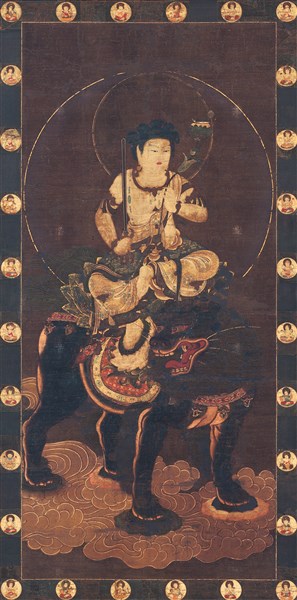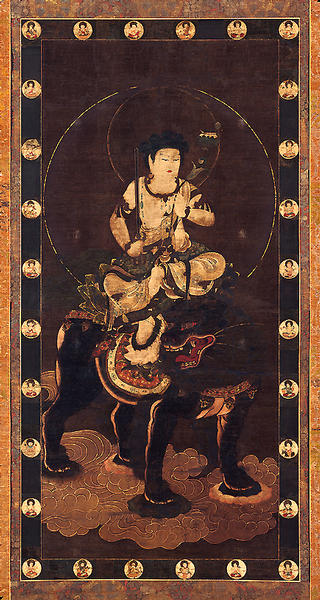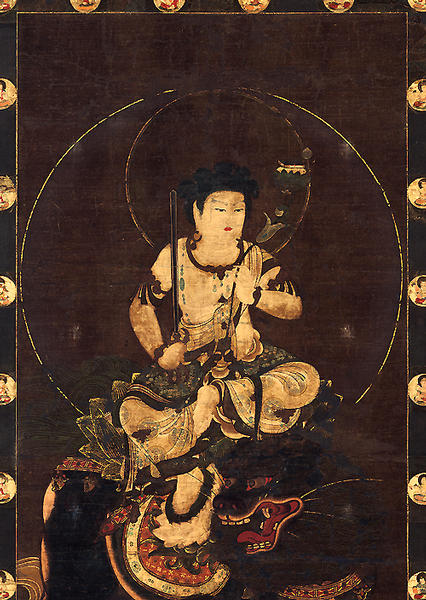Five-Hair Knot Monju (Manjusri)
- Kamakura period
- 14c
- Hanging scroll, color on silk
- H-80.7 W-36.8
- Formerly in the collection of the Dan family
Catalogue Entry
Kamakura period, 14th century
Hanging scroll, color on silk
Height, 80.7cm; width, 36.8cm
Monju Bosatsu is shown in paintings either as an attendant to Shaka Nyorai (S⇔akyamuni) or as a single deity for worship. The present work shows Monju riding on the back of a shishi (lion dog)who stands on clouds. This form of Monju is generally said to depict the "Ocean-Crossing" form of Monju based on the Chinese Wutaishan Monju belief, and frequently images of this form of the deity include depictions of his attendants and entourage. Nothing is depicted in the background of the present work, and yet we can assume that while the usual elements have been here omitted, this iconography does originate in the Wutaishan Monju beliefs.
Monju's flesh is shown as white, with details picked out in light cinnabar lines. The deity's right hand holds a sword, and the left holds a lotus flower stem supporting a box for Sanskrit texts. The deity's hair has been arranged into 5 knots. While Monju is shown with a young visage, the depth of his facial features and large hair-knots show that some details and subtleties have been lost from the features. The gloomy, stern expression is filled with a sense of tension, however, and this would indicate that the work is from no later than the Kamakura period.
There is no cut gold leaf used in the motifs on the drapery; all motifs are depicted solely in gold paint and polychrome. The johaku has butterfly-wing pattern-like grouped flower motifs shown in gold paint and white cloud motifs, while the waist cloth has polychrome karahana motifs, and the mo has polychrome hosoge-grouped flower motifs and white linked vajra motifs. Overall the motifs are drawn in detail, and the palette focuses on cool tones centered around dark green. These are also characteristic elements of Kamakura period Buddhist painting.
The shishi (lion dog) is painted entirely in ultramarine, while its mane has been painted in malachite green. Like the drapery motifs, the motifs on the saddle are drawn in extremely fine detail.
While there are formalized aspects in the appearance and facial features of the image, overall the depiction is carefully rendered, and the work can be considered to be from the latter half of the Kamakura period. Fragments of what appear to be images of the 28 constellations from what looks like a Nambokucho period Star Mandala have been pasted around the four edges of the Monju image. These constellation images are separate from the original silk ground of the Monju image, and a painted mount area has been added onto the exterior of this constellation image band. TI


